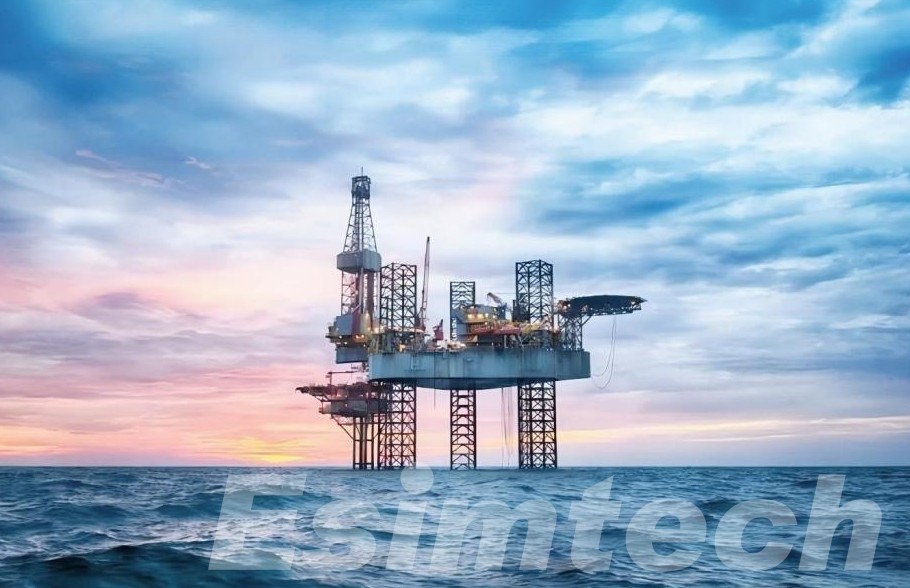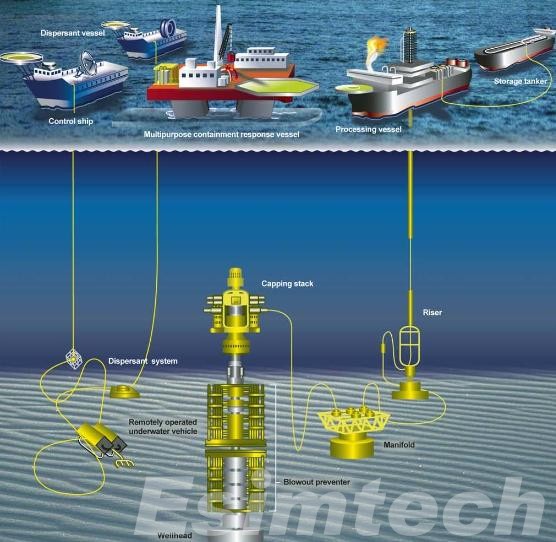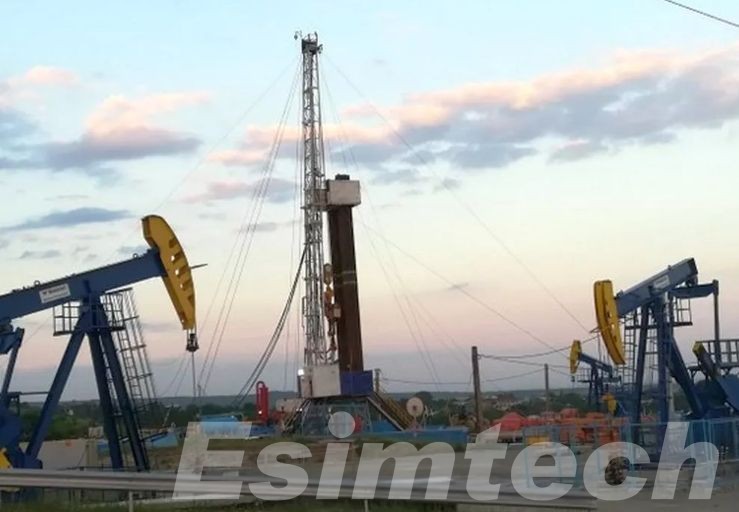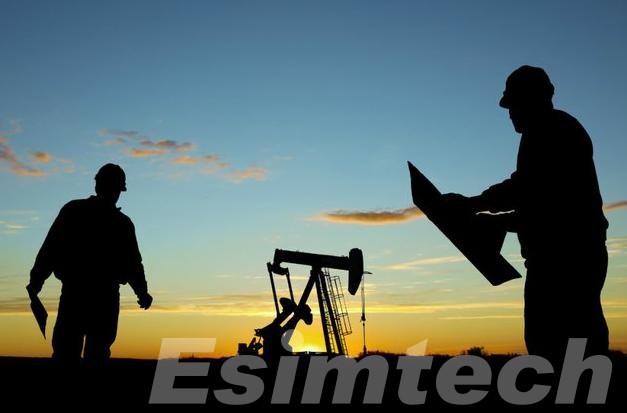Offshore and Onshore Oil Rig Installation: What are the Differences
Oil rigs are the workhorses of the oil and gas industry, extracting valuable resources from deep beneath the earth’s surface. But before they can begin drilling, these complex structures need to be meticulously installed. The processes for offshore and onshore oil rig installation differ significantly, requiring specialized techniques and equipment.
The Process of Offshore Oil Rig Installation

Installing an offshore oil rig is an awe-inspiring feat of engineering that demands meticulous planning, cutting-edge technology, and a team of highly skilled professionals. Here’s a closer look at the intricate steps involved:
1. Site Selection and Survey:
- Geophysical Surveys: Advanced seismic techniques are used to map the seabed and identify potential hydrocarbon reserves. Seismic data helps determine the presence and depth of oil and gas deposits, as well as any potential geological hazards that could impact rig stability.
- Geotechnical Surveys: Once a promising location is identified, detailed geotechnical surveys are conducted to assess the seabed’s composition and bearing capacity. This involves collecting core samples and analyzing soil strength to ensure the rig can withstand the immense weight and environmental forces.
- Environmental Impact Studies: Environmental considerations are paramount. Studies assess potential impacts on marine life, ecosystems, and water quality. Mitigation strategies are developed to minimize these impacts and comply with environmental regulations.
2. Rig Transport:
- Heavy-Lift Vessels: Due to their massive size and weight, offshore oil rigs are typically constructed in specialized fabrication yards onshore. Once complete, these behemoths embark on their journey to the offshore location aboard specially designed heavy-lift vessels. These vessels boast enormous payloads and sophisticated ballast systems to ensure safe and stable transportation across potentially rough seas.
- Weather Monitoring: The transportation phase is meticulously planned around weather conditions. Calm seas are crucial for safe and precise maneuvering of the heavy-lift vessel during rig positioning.

3. Foundation Installation:
The type of foundation chosen depends on the water depth and seabed characteristics. Here are two common methods:
- Jackets: For shallow water depths, a steel jacket, essentially a giant lattice structure, is fabricated onshore and transported to the location. Powerful cranes then lift the jacket and meticulously lower it onto the seabed. Piles are driven deep into the seabed to provide additional stability, and the jacket legs are secured to these piles. The pre-assembled topside modules of the rig can then be mated with the jacket, creating a stable platform for drilling operations.
- Mooring Systems: For deepwater installations, a more complex mooring system is employed. This involves anchoring the rig to the seabed using multiple anchor lines. Specialized anchor types, such as suction anchors or drag anchors, are chosen based on seabed conditions. Once positioned, powerful winches tension the mooring lines, holding the rig firmly in place against strong currents, waves, and wind.
4. Topside Installation:
The topside modules, housing the drilling equipment, processing facilities, living quarters, and other essential components, are pre-assembled onshore. These modules are then meticulously lifted and precisely positioned onto the jacket or the rig deck (in the case of a self-contained floating rig) using cranes with immense lifting capacities. Highly skilled teams ensure proper alignment and secure connections between the modules.
5. Hookup and Commissioning:
Once the topside modules are in place, the next stage involves intricate hookup and commissioning activities. This entails:
- Piping and Electrical Systems: A vast network of pipes and electrical cables are meticulously installed and connected to ensure the flow of hydrocarbons, water, drilling fluids, and power throughout the rig.
- Equipment Installation: Drilling equipment, processing units, and other vital machinery are installed on the rig deck and integrated with the piping and electrical systems.
- Testing and Verification: Rigorous testing and verification procedures are conducted on all systems to ensure they function flawlessly and meet stringent safety standards. This includes pressure testing of pipelines, leak detection, and functionality checks of all equipment.
The Process of Onshore Oil Rig Installation

Onshore oil rig installation, while less complex than its offshore counterpart, still involves a series of crucial steps to ensure a safe and functional drilling operation. Here’s a deeper dive into the process:
1. Site Preparation:
- Land Acquisition and Permits: The first step involves securing the drilling location through land purchase or lease agreements. Obtaining necessary permits from local and federal authorities for environmental impact, safety protocols, and construction activities is vital.
- Groundwork and Access Roads: The chosen site is meticulously surveyed to determine soil composition and bearing capacity. Based on these factors, engineers design the foundation for the rig and any supporting structures. Clearing and leveling the land may be required, along with building access roads for transporting rig components and equipment.
- Utilities and Amenities: Depending on the project’s scale and remoteness, establishing utilities like power, water lines, and waste disposal systems might be necessary. Onsite amenities such as crew quarters, storage facilities, and waste management areas may also be constructed.
2. Rig Transport:
- Modular Design: Onshore rigs are typically modular, consisting of pre-fabricated sections that can be easily transported by heavy-duty trucks. This modularity allows for flexibility in rig size and configuration based on the specific well requirements.
- Transportation Logistics: Planning for rig transport involves determining the most efficient route considering weight limitations of roads and bridges. Specialized trailers with multiple axles may be required for oversized components. Pilot cars and traffic control measures might be necessary to ensure safe transportation on public roads.
3. Rig Assembly:
- Foundation Construction: Depending on the rig size and soil conditions, a concrete foundation pad or steel beams may be used to distribute the rig’s weight and provide a stable base. Precise leveling and alignment are crucial at this stage.
- Substructure Assembly: The rig’s substructure, which includes the main frame or tower, is erected following the manufacturer’s specifications. Cranes with appropriate lifting capacities are used to maneuver and secure the substructure components.
- Mast and Derrick Installation: The mast, a tall vertical structure, is erected on the substructure to provide support for the drilling equipment. The derrick, a moveable framework used for raising and lowering drill pipes, is then hoisted and secured atop the mast. Precise alignment of these components is essential for safe and efficient drilling operations.

4. Equipment Installation:
- Drilling Equipment: The core drilling equipment, including the drawworks (providing power for raising and lowering drill pipe), mud pumps (circulating drilling fluid), and top drive (rotating the drill string), are installed on the rig platform.
- Auxiliary Equipment: Additional equipment like blowout preventers (BOPs) for well control, separators for managing drilling fluids, and generators for power supply are also positioned and connected.
5. Commissioning and Testing:
- System Checks: Once all components are installed, a rigorous commissioning process verifies the functionality of each system. This includes testing the drilling equipment, BOPs, mud circulation system, and safety protocols.
- Wellbore Planning and Preparation: While the rig is being commissioned, engineers finalize the wellbore plan, which defines the well’s trajectory, depth, and casing program. The wellhead, the assembly at the top of the wellbore that provides access for drilling and production, is also prepared.
Difference Between Offshore and Onshore Oil Rig Installation
In summary, the key differences between offshore and onshore oil rig installation lie in the environment and the resulting complexities:
| Feature | Offshore Oil Rig Installation | Onshore Oil Rig Installation |
| Environment | Marine (Unstable, Wind, Waves, Currents) | Land (Stable) |
| Foundation | Jacket (Shallow Water) or Mooring System (Deep Water) | Prepared Ground |
| Transport | Heavy-lift vessels | Trucks (Modular Design) |
| Logistics | More complex due to remote locations and specialized equipment | Simpler due to easier access and standard equipment |
| Challenges | Weather conditions, seabed stability, complex positioning | Site preparation, ensuring structural integrity |
Animation of Oil Rig Installation

An animation depicting the oil rig installation process can be a powerful tool for both technical and non-technical audiences. The captivating animation could bring the installation process to life. It could begin with a map highlighting the chosen offshore or onshore location. For offshore rigs, the animation would showcase the transportation of the massive structure on a heavy-lift vessel. The animation could then depict the lowering of the jacket (if applicable) or the deployment of the mooring system, emphasizing its secure anchoring. Finally, it would visually represent the meticulous positioning and connection of the rig onto its foundation.
For onshore rigs, the animation could start with the transportation of modular components by truck. The assembly sequence could be visualized, showcasing the careful construction of the rig’s platform. Lastly, the animation would depict the installation of drilling equipment and other essential components, signifying the rig’s readiness for operation.
Conclusion
In conclusion, offshore and onshore oil rig installation processes exhibit distinct differences shaped by the unique challenges and environmental factors inherent to each setting. While offshore installations navigate the complexities of marine operations and seabed anchoring, onshore installations face challenges such as land preparation and community relations. Understanding these disparities is essential for stakeholders in the oil and gas industry, as it informs decision-making processes and facilitates the successful execution of drilling operations.
